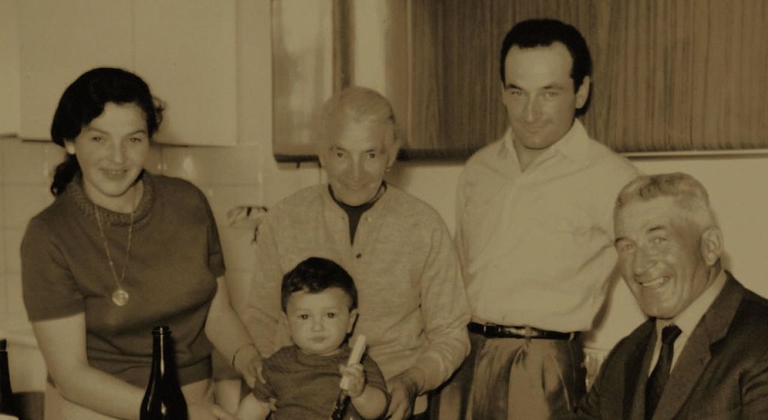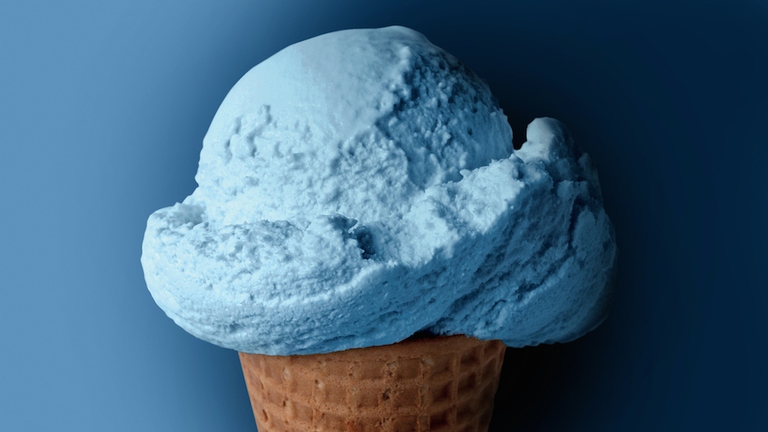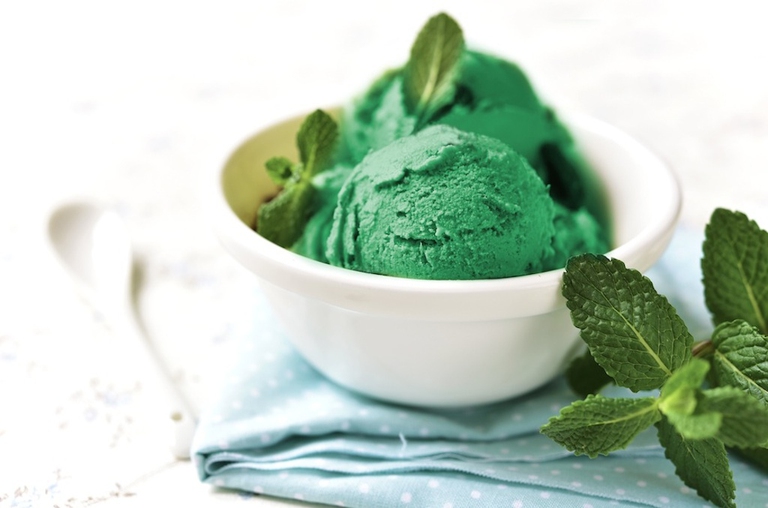
Factory farming conditions and antibiotic-resistant pathogens emerging as a result of them pose an existential threat to humans in the form of zoonotic diseases. Why it’s time to produce and consume food more thoughtfully.
We’re talking about Galatea, a company that produces semi-finished products for artisanal ice creams using high quality ingredients, natural colouring, excluding thickeners and hydrogenated fats, respecting the environment and supporting the less fortunate.
The story of the Pillot family is all about ice cream. It starts in the Italian region of Veneto in the 1960s, and continues in Germany where mothers, fathers and their kin work together to open a number of ice cream parlours, finally returning to Italy between Treviso and Belluno. Here, Stefano, the oldest brother, starts a new adventure by founding his own brand: Galatea. His objective? Creating new bases for truly artisanal ice creams. Now CEO Stefano Pillot tells us how all of this was possible.
What concept underpinned the founding of Galatea?
Galatea was born out of the desire to create a product-service capable of elevating artisans’ craftmanship. We supply what they need for their daily work, i.e. semi-finished products that in this case also entail a service: a research and development component that single artisanal workshops would find difficult to implement. Our knowhow and network of professionals allow us to select high quality ingredients and manufacture bases that are strongly characterised by their natural aspects, which we strongly believe in and that, we think, should always be expressed through artisanal products.
Since its founding, Galatea has decided not to use chemical thickeners, hydrogenated fats, artificial colourings or GMOs. Why was this direction chosen?
Ice cream is a product with few, simple ingredients: milk, cream and eggs for cream flavours; fruit, water and sugar for fruit ones. In time, it became possible to produce creamier ice creams, less sorbet-like, by manipulating the raw ingredients – but this meant using thickeners and hydrogenated fats, integrating more chemical processes in production. We eliminated all of these aspects and instead help artisans produce an ice cream that is as natural as possible.
An ice cream that is healthy for people as well as the environment.
Excluding tropical fats like palm oil, for example, whose cultivation causes deforestation and air pollution when production waste is burnt, contributes to environmental protection. Our small business is growing and we’re trying to promote actions aimed at making production processes more sustainable, from using clean energy to controlling water use, elements that we would like to make even more central once we move to our new headquarters. We also believe in the importance of social actions, this is why we support the Valemour Association in its mission to help people with intellectual disabilities enter the world of employment.
The value of your work is confirmed by the numerous certifications Galatea has earned. Can you tell us about them?
The certifications relate to the products used in the Libera (which means “free” in Italian) Line, as well as the Wellness and Organic Lines. The “Social value” certification was the first challenge and first recognition that confirmed that what we were claiming was true. The more I think about it, the happier I am that we managed to obtain it: an external body certified that all recipes and procedures are in line with our statements, and that none of our suppliers exploit the environment or labour force. We also earned the organic certification (which provides an added value to naturalness) as well as vegan and organic-vegan certifications to meet the needs of those who follow these types of diets. We also produce a kosher line and will be adding a halal one very soon. In March 2017, Galatea obtained the FSSC 22000 certification relative to food quality and safety, another effort made by the company to provide customers with even more assurances.
What are the most innovative products you’ve developed?
Definitely Spirulì: it’s now seven years old and allowed us to produce the first light blue ice cream without using artificial colourings, by employing spirulina algae’s natural colour. We built our image around Spirulì: “If we can make blue natural, then we can make anything”. Last year by using Piementina we reinterpreted our mint flavour, which is green without using artificial colouring agents thanks to the use of mint from Piedmont.
On this topic, you want your products (many of which are locally sourced) and production processes to be as Italian as possible, right?
Our almonds and pistachios are Italian, the apple juice we use is from Friuli, we’re trying to work with the typical Pordenone fig and would like to rely on algae cultivated only in Italy for Spirulì. We try to deal directly with producers in order to shorten the supply chain and be certain of the provenance of our products. Working in Italy is difficult for many reasons, from lack of support for innovation to market penetration issues. The idea that “natural” products don’t taste good is widespread, but if done the right way, they’re actually tastier and healthier. While there is some awareness on the issue, things are still moving slowly.
What future projects are in store?
Many. We’ve created an innovative line in the field of pastry and bakery, offering natural mixes, free from chemical additives and that can still be preserved easily, without moulding, for a long time. We’re trying to find a substitute for gelatine, which still has no equivalent product and is mathematically irreplaceable. We work hard to avoid using sugar and polyols, ensuring that the sugar content of our products is very low or non-existent.
Do you believe Galatea has revolutionised the sector of semi-finished products for ice cream?
By looking around, I’d say so. We’ve risked a lot by putting ourselves out there in uncharted territory, with objective difficulties in terms of technical production – and we’re now working to elevate our quality even further. Candied fruit comes to mind: we’re trying to make it preservative and sorbate free whilst maintaining stability during processing, this is why we’ve had to imagine non-conventional production processes.
Do you feel like you’ve had a positive impact on artisanal ice cream makers, that you’ve somewhat inspired them to move towards a more sustainable future?
The #ImNaturallyGood (#SonoBuonoNaturalmente) project, for example, provides ice cream parlours with a kit that contains sustainable products like cups made from biodegradable cardboard, printed with water-based inks and 100% recyclable. We also hand out leaflets that inform consumers about the quality of the ice cream and excellent work of the people making it. Therefore, in this respect, I’d say yes.
Siamo anche su WhatsApp. Segui il canale ufficiale LifeGate per restare aggiornata, aggiornato sulle ultime notizie e sulle nostre attività.
![]()
Quest'opera è distribuita con Licenza Creative Commons Attribuzione - Non commerciale - Non opere derivate 4.0 Internazionale.
Factory farming conditions and antibiotic-resistant pathogens emerging as a result of them pose an existential threat to humans in the form of zoonotic diseases. Why it’s time to produce and consume food more thoughtfully.
Like with all foods, the quality of an ice cream can be discerned by reading its label. An expert explains how to do this, and tells us how their company steers clear of chemicals, using only natural ingredients to produce an excellent and “free” ice cream.
Quality ingredients, no artificial colouring and hydrogenated fats. These are the main features of a great ice cream. But what makes an ice cream parlour “good”, i.e. sustainable?
The world of cinema recognises the link between food choices and the climate crisis by offering vegan menus for awards season events, including at the most important of them all: the Oscars.
Let’s look at the reasons behind the growth of veganism in India, as a small yet vocal section of the population turns towards this diet and lifestyle in the largest milk producing country in the world.
by Jeffrey Y. Campbell, Manager of the Forest and Farm Facility at FAO In the Ecuadorian Amazon, Kichwa farmers grow dozens of products on tiny parcels of land. Their lands hum with biodiversity, yielding nutritious foods that have sustained families for generations. Wandering among fruit and nut trees and crops, these indigenous agroforesters fill their baskets
Mint has many health benefits, but in food it’s often accompanied by artificial green colourings. Instead, Galatea has created a green mint ice cream in a completely natural way.
The mad rush to fake food, like fake meat made with genetically-modified soy, ignores the importance of the diversity of our foods and culinary cultures. It’s a recipe to accelerate the destruction of the Planet and our health.
She healed completely by becoming vegan over 25 years ago following an accident that cost her her leg. We met Heather Mills at Seeds&Chips, where she told us about her pioneering food company VBites.











